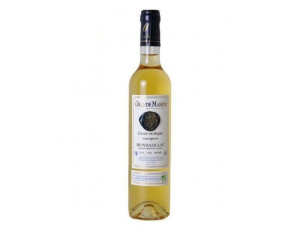You have no items in your shopping cart.
Wine Monbazillac
The most famous appellation of the region, Monbazillac transports us. It is a perfect match for appetizers or cheese (a blue cheese from Auvergne for example). This sweet nectar will delight the amateurs of sweet wines. Read more on Monbazillac
-
Top Selling-32%
-
Top Selling
-
Top Selling
Appellation Monbazillac
Monbazillac, one of the pillar vineyards of the Southwest
The Monbazillac terroir is located in the heart of the Perigord region, around the commune of Monbazillac. Here, viticulture began as early as the Gallo-Roman era, but Monbazillac was truly born in the Middle Ages. Belonging to the Benedictine priory of Saint-Martin since the end of the 11th century, legend has it that the vines were left fallow, thus allowing botrytis cinerea (the fungus that causes noble rot) to settle in the vineyard.
It is therefore since this time that the term "noble rot" appears in the wine world, and is recognized as a way to obtain fat wines and an unprecedented sweetness. The history of Monbazillac continues through the centuries, and the appellation extends internationally when it is exported to Holland by the Huguenots of the region exiled following the revocation of the Edict of Nantes in 1685.
In 1936, Monbazillac was among the first French appellations to be awarded the French AOC label. To this are imposed some restrictions: minimum density of 4000 vines per hectare for the vines, maximum yield between 30 and 40 hectoliters per hectare, prohibited irrigation, manual harvesting... In this appellation, we find the "classic" Monbazillac, with an average sugar content of 45 grams per liter (and 14% minimum alcohol) and the Monbazillac "selection de grains nobles", with an average sugar content of 85 grams per liter (and 17% minimum alcohol).
A unique terroir
The AOC Monbazillac wine area covers 3600 hectares of vineyards, in the Périgord. The vines face due north, positioned on gently sloping hillsides at a low altitude, between 10 and 50 meters.
The climate is temperate oceanic, and the proximity of the vineyard to the Atlantic Ocean gives it ideal conditions for the development of the botrytis cinerea fungus (alternating hot and humid periods, and autumn mist).
The soils that make up this vineyard are composed mostly of clay and limestone. They allow a good retention of water (clay) and an efficient filtering (limestone). Coupled with a balanced rainfall and a slight slope, the vines are well irrigated.
Sweet and tasty wines
Monbazillac is regularly compared to Sauternes because of its aromas, density and sweetness levels. This is primarily due to the similar blends of Semillon, Sauvignon and Muscadelle. The climates of the two regions are also quite similar, alternating warm and sunny seasons with humid and foggy weather.
The robe of Monbazillac is particularly golden and brilliant. When young, the color is very clear, and it intensifies over time until it reaches an amber hue (all the more important if the wine has been aged in barrels). The nose is very expressive, mixing honeyed, floral and dried fruit aromas. On the palate, the wine is as powerful as it is fat, with rather sweet notes. The particularity of the wines of this appellation is to offer roasted notes given by the development of botrytis cinerea.
The best vintages of the appellation
The year 2005 was, as for many wines in the Southwest region, the source of an excellent vintage. The years 2001 and 2009 also give birth to very good Monbazillac. Finally, the years 1990, 1996, 2003 and 2011 are also at the origin of wines of great quality.
The ideal food & wine pairings
Monbazillac wines are sweet wines that combine aromatic power with fatty and sweet character. Often seen as the accessible, mainstream Sauternes, Monbazillac pairs well with typical dishes from the Perigord region, and dishes associated with sweet wines.
Monbazillac is therefore generally associated with foie gras from Périgord, blue cheese from Auvergne, sweet fruits from Périgord, poultry with cream and mushrooms or desserts with cooked fruits.
Sud-Ouest appellations























 TWIL - Achat de Vin
TWIL - Achat de Vin


